Do you have a question about the Ingersoll-Rand 2135TI and is the answer not in the manual?
Essential to read and understand the manual before operating the product.
Failure to follow warnings can lead to injury.
Use clean, dry air at 90 psig maximum pressure.
Ensure correct size and tight security for all hoses and fittings.
Install and make users aware of emergency shut-off valve location.
Do not use damaged, frayed, or deteriorated air hoses and fittings.
Be aware of hidden hazards in the work environment, avoid contact with utilities.
Keep hands, clothing, hair, and jewelry away from the tool's working end.
Be aware of potential harm from vibration and repetitive motions; stop if discomfort occurs.
Maintain a balanced and firm body stance; do not overreach during operation.
Anticipate and be alert for sudden changes in motion and reaction forces.
Be aware that tool may continue motion briefly after throttle release.
Ensure tool is off before applying air pressure and avoid throttle when carrying.
Secure work pieces using clamps or vises whenever possible.
Do not use tools when tired or under the influence of medication, drugs, or alcohol.
Never use a damaged or malfunctioning tool or accessory.
Do not modify the tool, safety devices, or accessories.
Use this tool only for purposes for which it is recommended.
Use only accessories recommended by Ingersoll-Rand.
Note the position of the reversing mechanism before operating the tool.
Use only impact sockets and accessories; avoid hand (chrome) sockets.
Always wear eye protection when operating or performing maintenance.
Read this manual before operating the tool.
Always wear hearing protection when operating the tool.
Four power settings available, indicated by increasing size on the rear housing.
Setting indicators denote power levels from minimum to maximum.
Inadequate air pressure can affect power output at all settings.
Use Ingersoll-Rand No. 10 Oil for disassembling and assembling the impact mechanism.
Use Ingersoll-Rand No. 115-1LB for routine external lubrication via the Hammer Case Grease Fitting.
Always use an air line lubricator; specific FRL unit recommendations provided.
Main air line inner diameter should be 3X the air tool's inlet diameter.
Branch air line inner diameter should be 2X the air tool's inlet diameter.
Use 3/8" coupler or larger; air hose with 1/4" NPT fittings.
Details on impacts per minute and recommended torque ranges for different models.
Sound and vibration level data tested according to industry standards.
Specifications tested in accordance with PNEUROP, CAGI/ANSI, and ISO8662 standards.
Supplier name and address for the product.
Declaration of sole responsibility for the product conforming to directives.
List of specific product models covered by this declaration.
Product compliance with provisions of relevant EU Directives, specifically 98/37/EC.
List of principle standards used to ensure product compliance.
Information regarding the serial number range and format.
Signatures of authorised personnel approving the declaration.
Diagram showing the assembly of the tool with numbered parts.
Part numbers for housing, frame, and related components.
Part numbers for anvil assemblies, retainers, and springs.
Part numbers for cylinder, rotor, vanes, and impact mechanism components.
Part numbers for reverse valve, O-rings, and gaskets.
Part numbers for trigger assembly and inlet bushing components.
Recommendation on stocking certain repair parts for minimal downtime.
Part numbers for support, retainer, and button kit components.
Part numbers for tune-up kits, air care kits, and lubricant supplies.
Troubleshooting steps for low power, dry motor, and inadequate air supply.
Troubleshooting steps for when the motor will not run.
Troubleshooting steps for when the tool fails to impact.
Contact information for Ingersoll-Rand service centers in the USA and Canada.
Contact information for Ingersoll-Rand service centers in Europe.
Contact information for Ingersoll-Rand service centers in South Africa, Denmark, Switzerland, Russia, and Poland.
| Brand | Ingersoll-Rand |
|---|---|
| Model | 2135TI |
| Category | Impact Driver |
| Language | English |
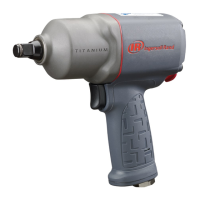
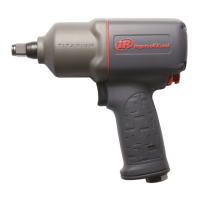
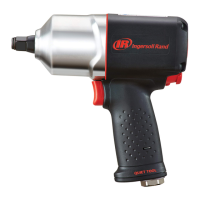

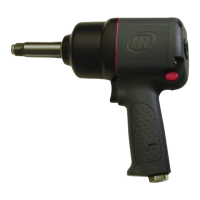
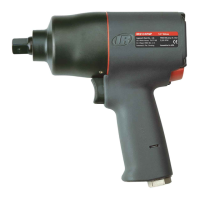
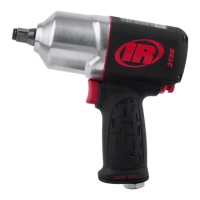
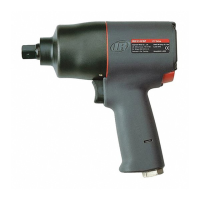

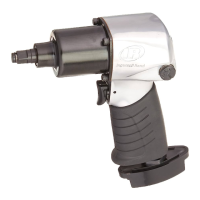
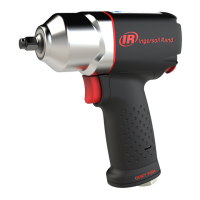

